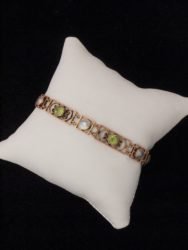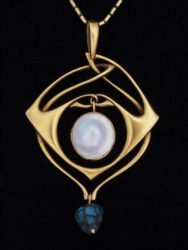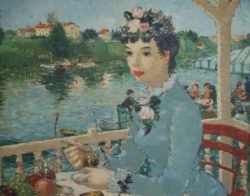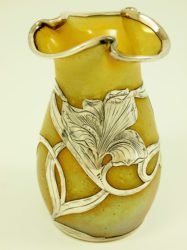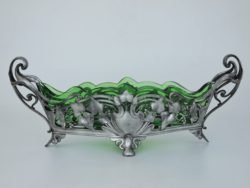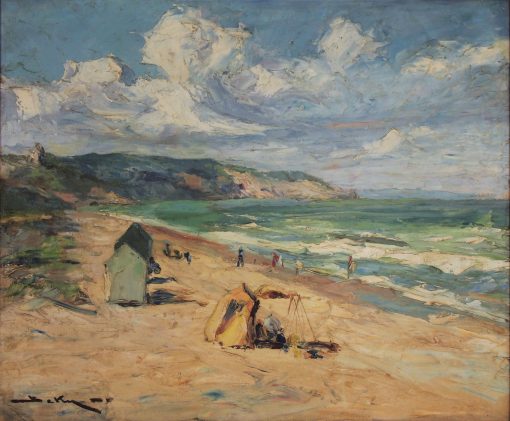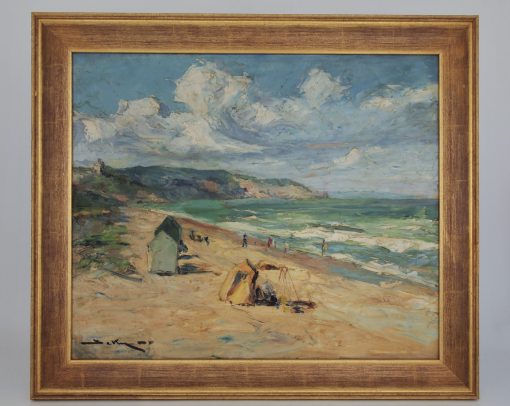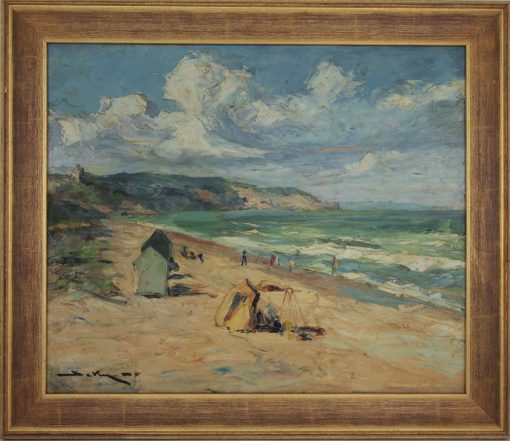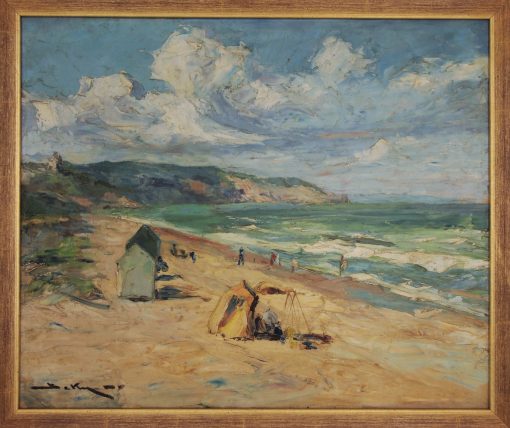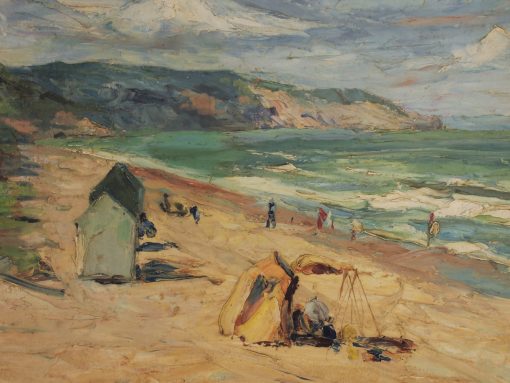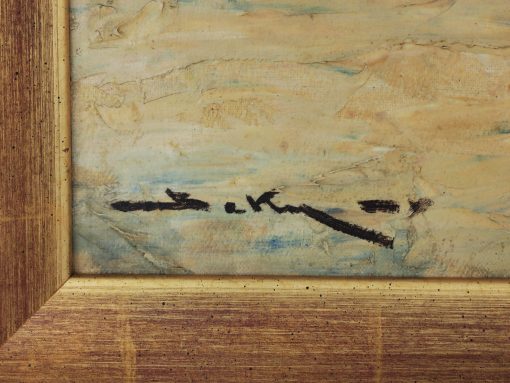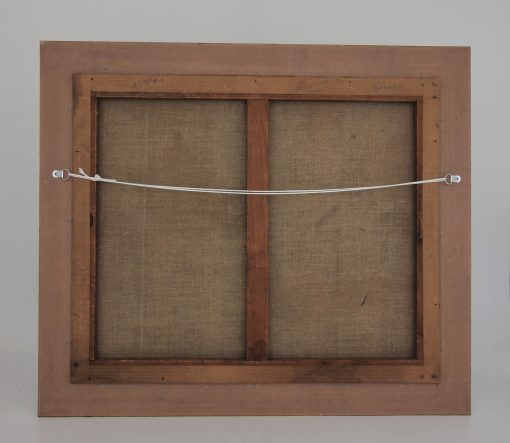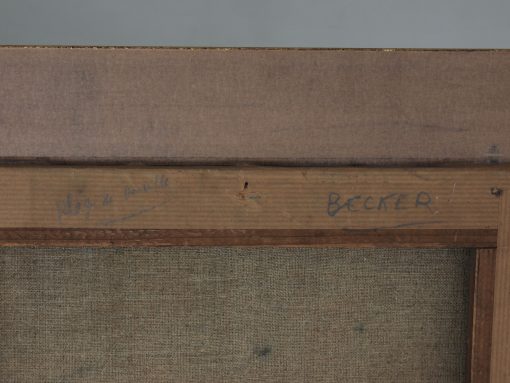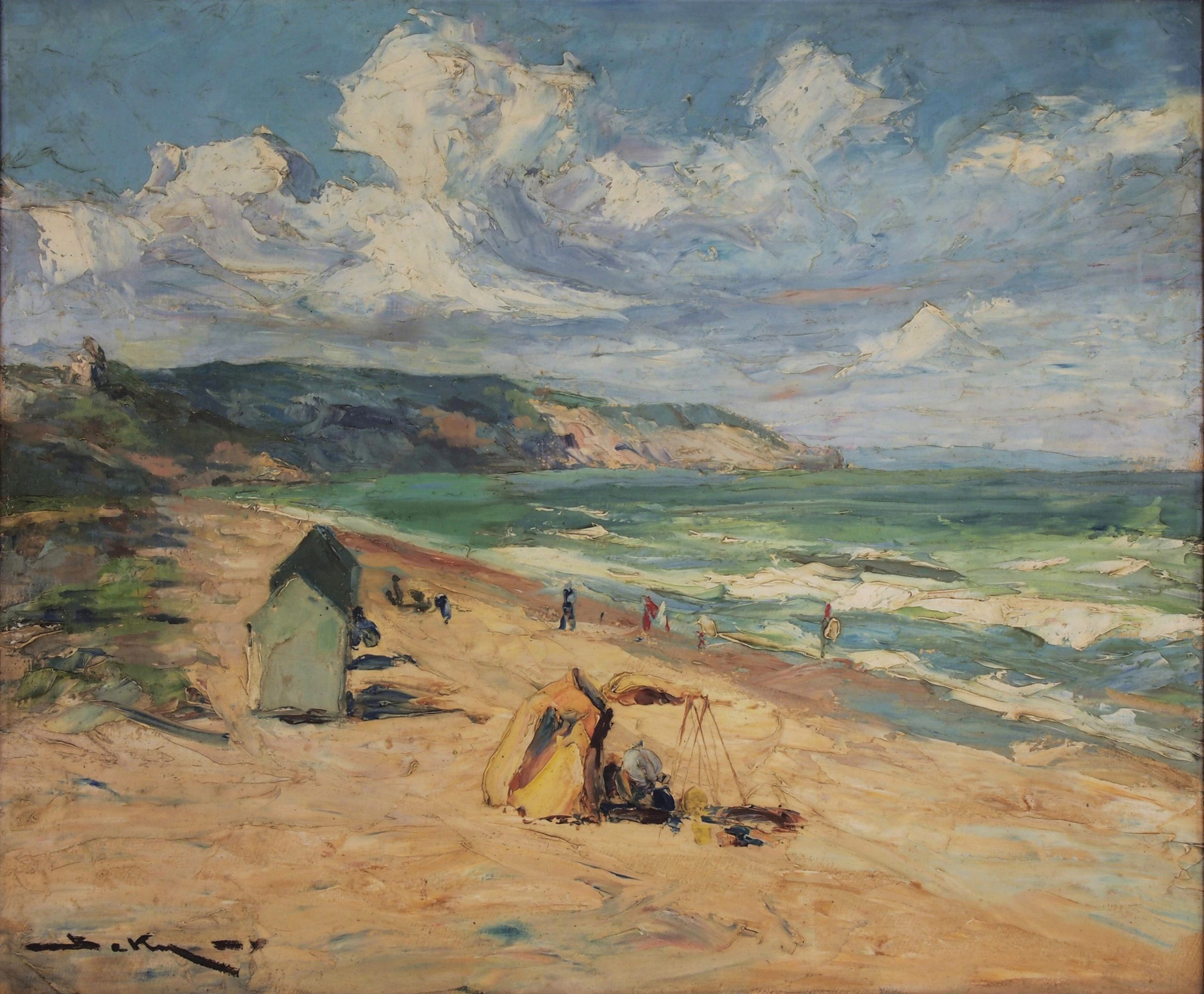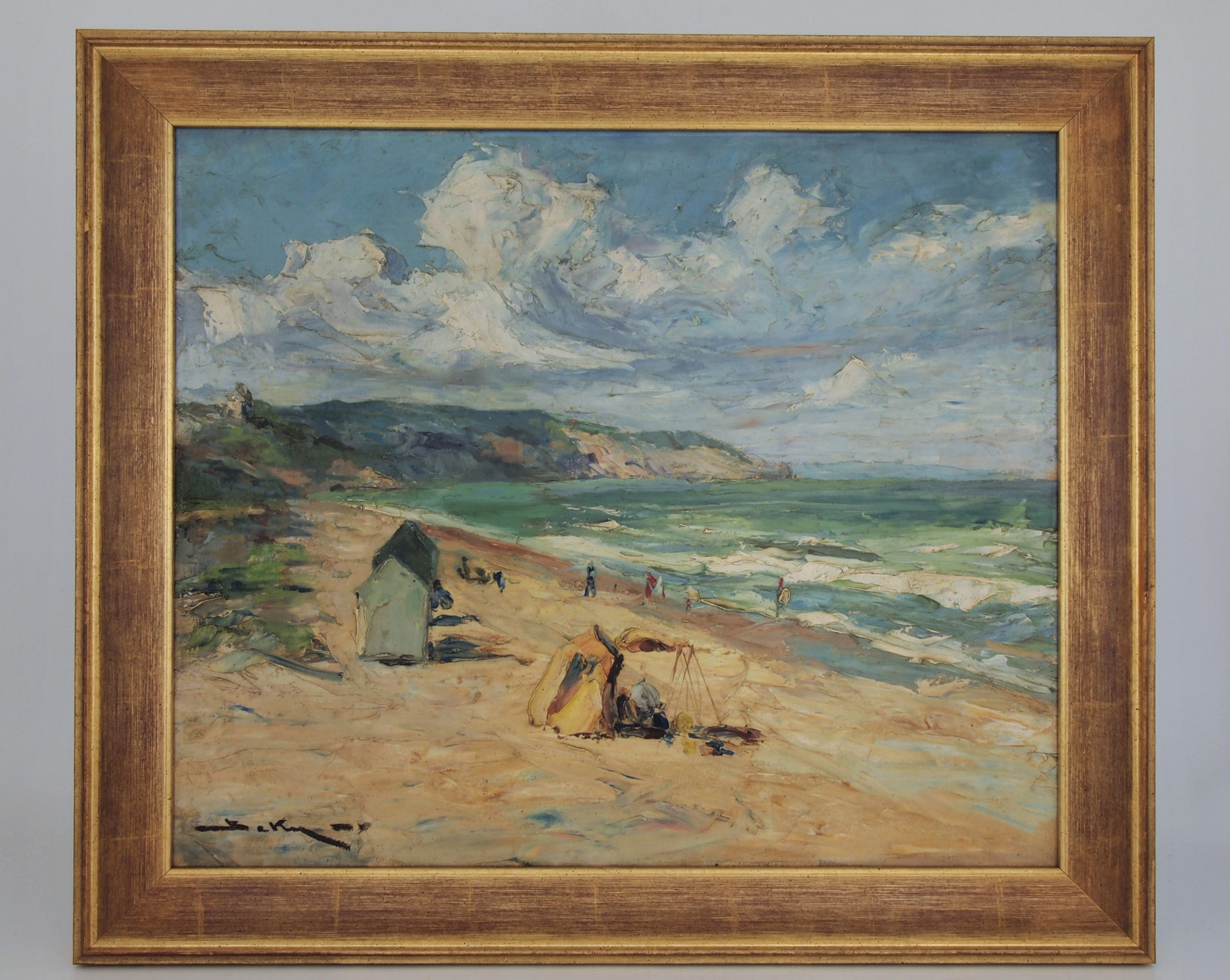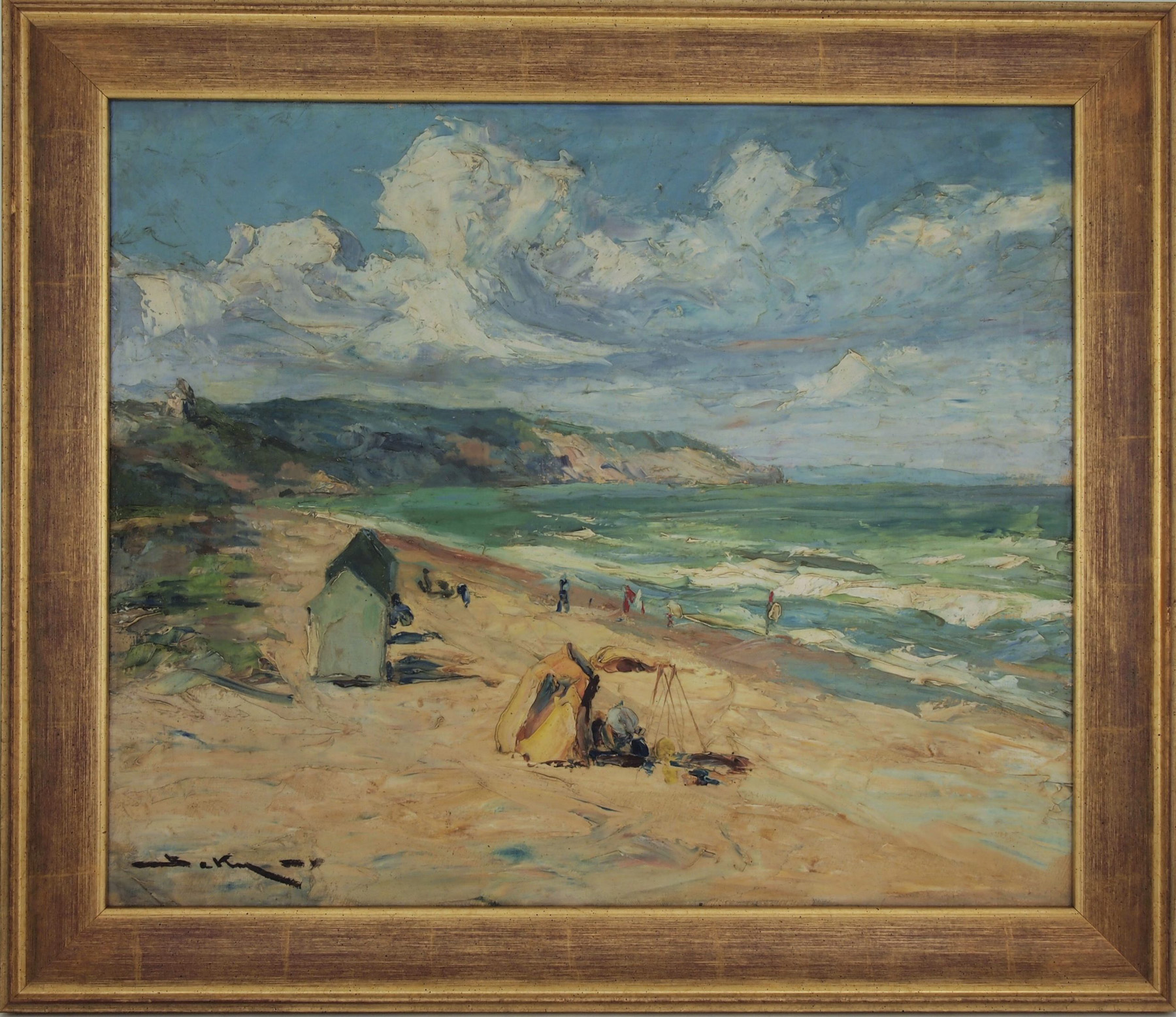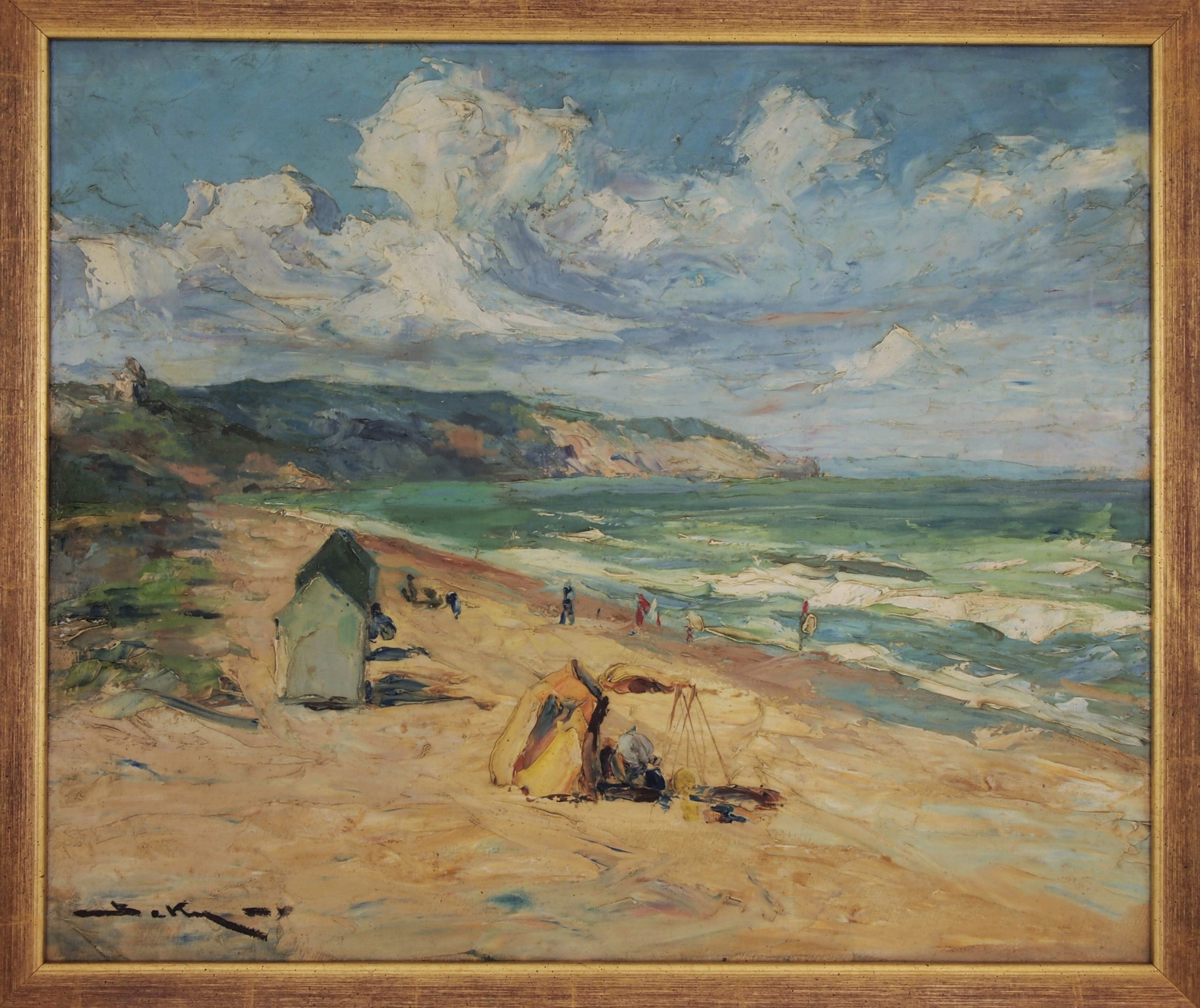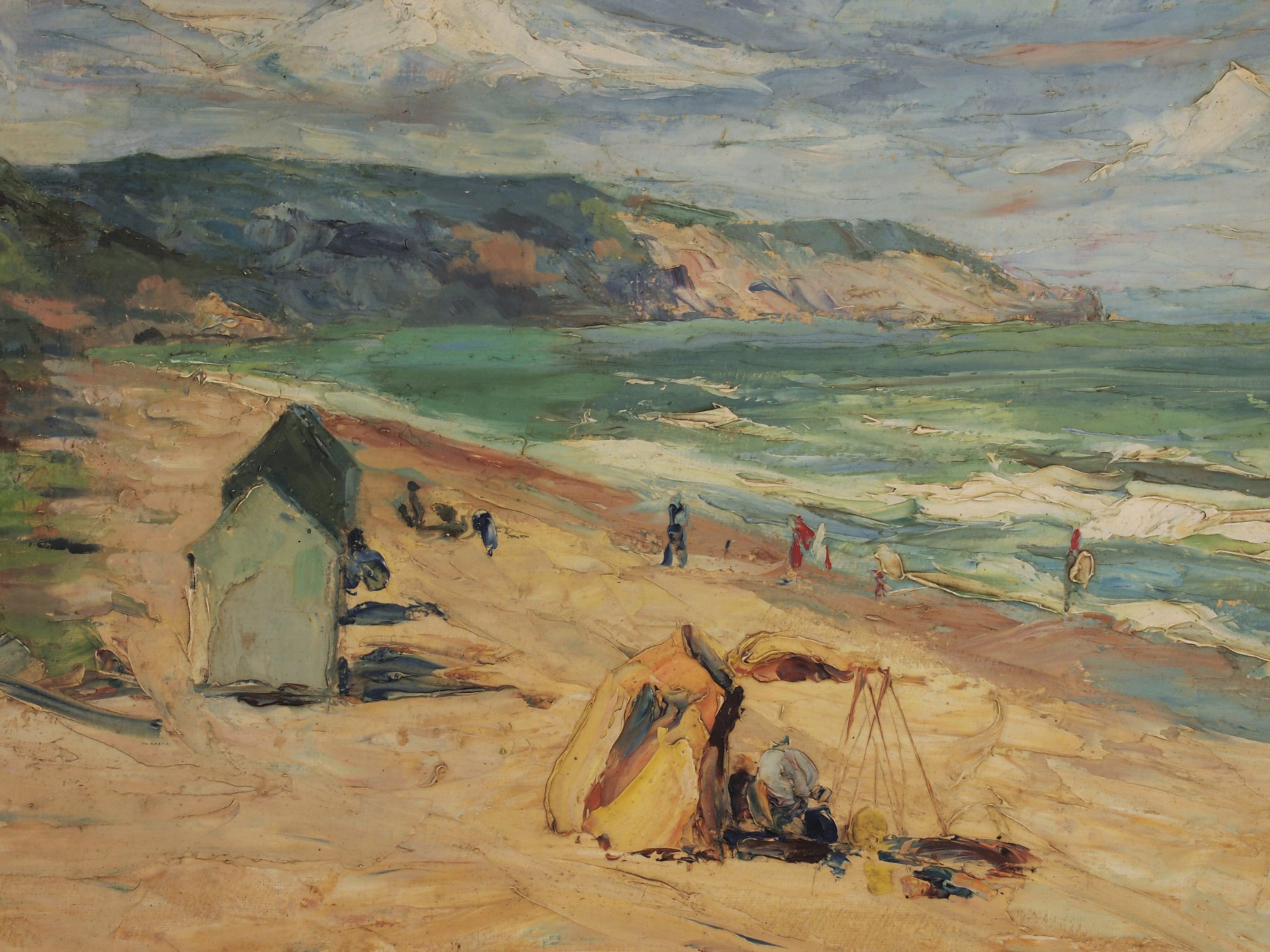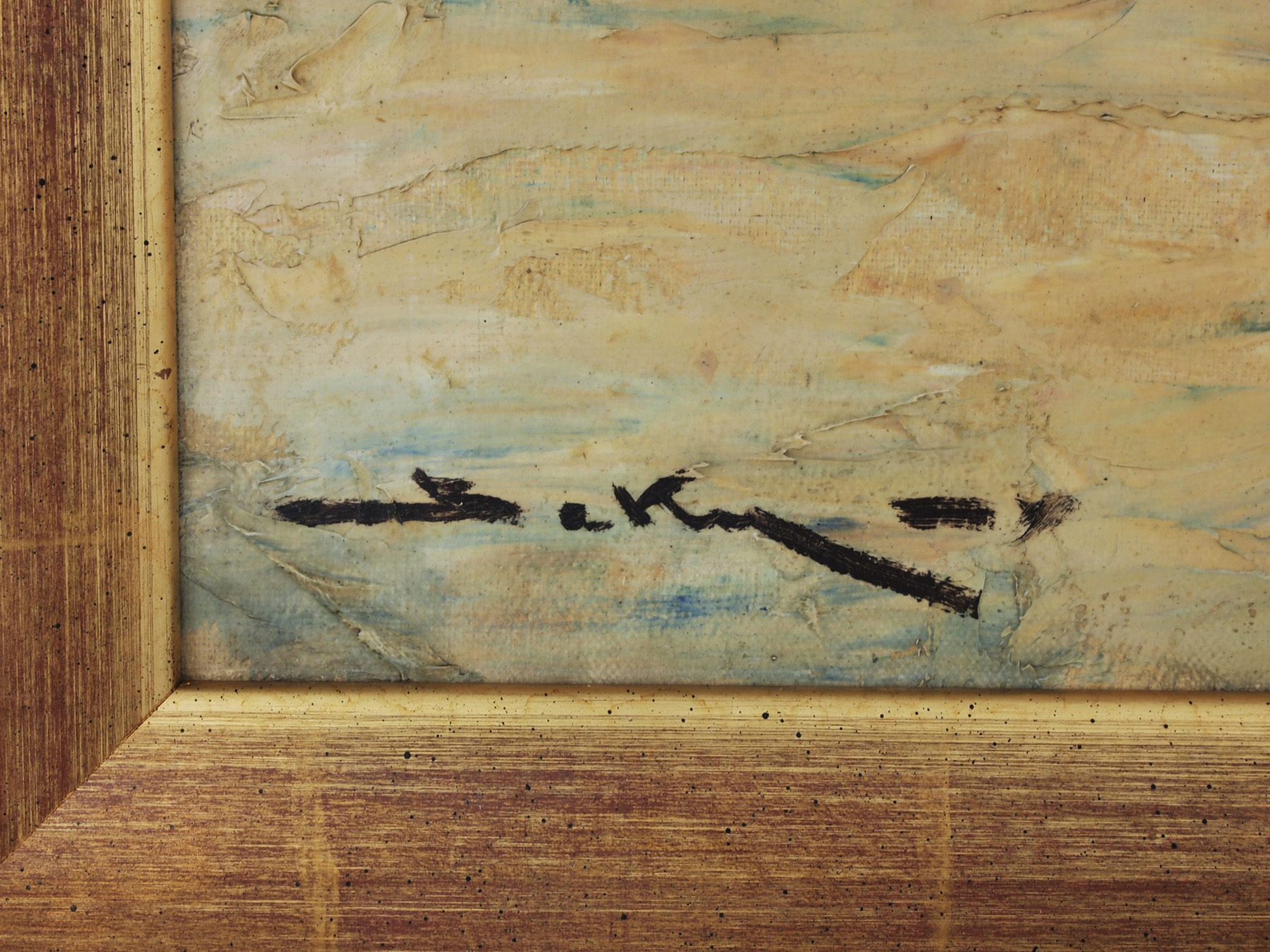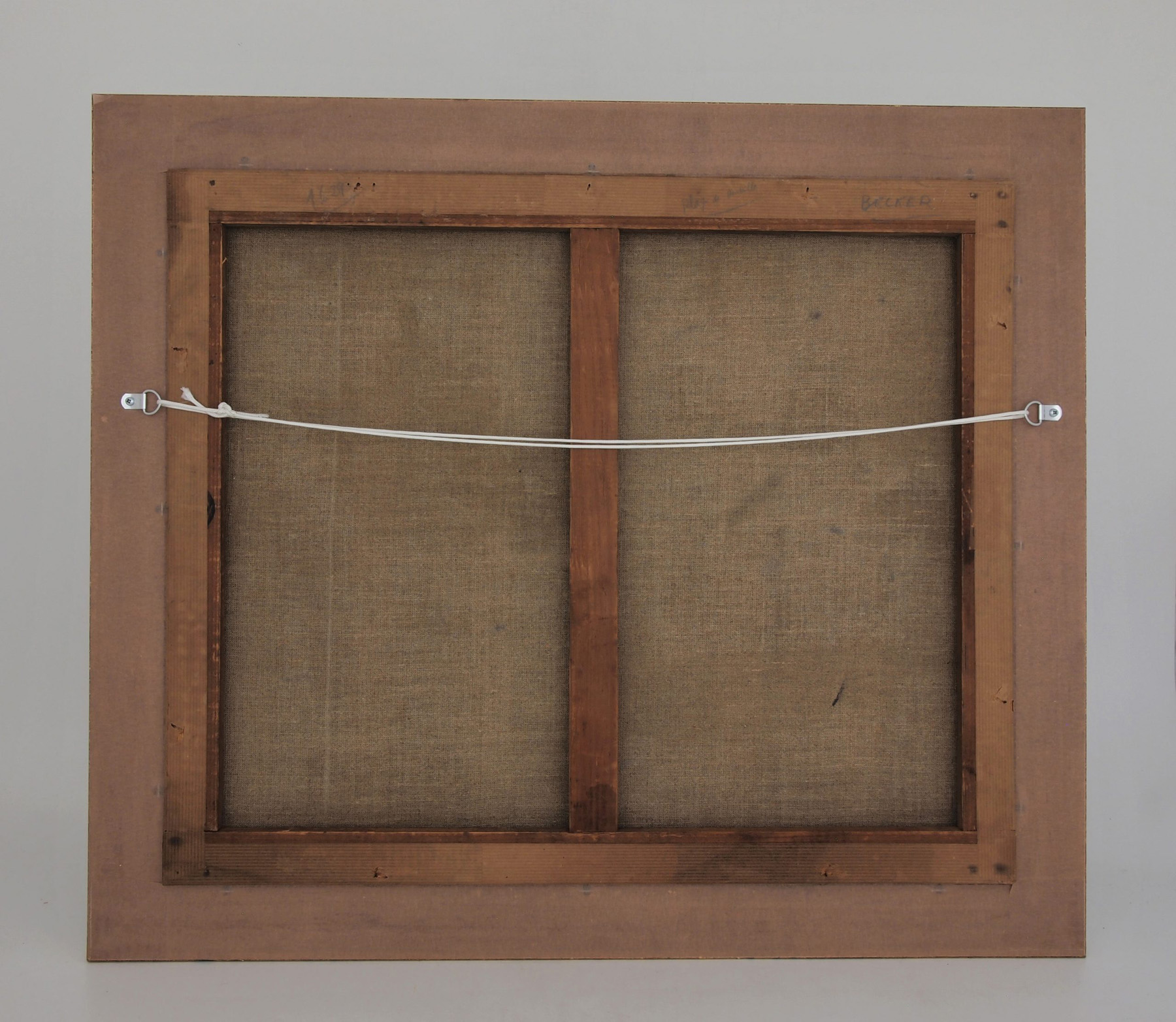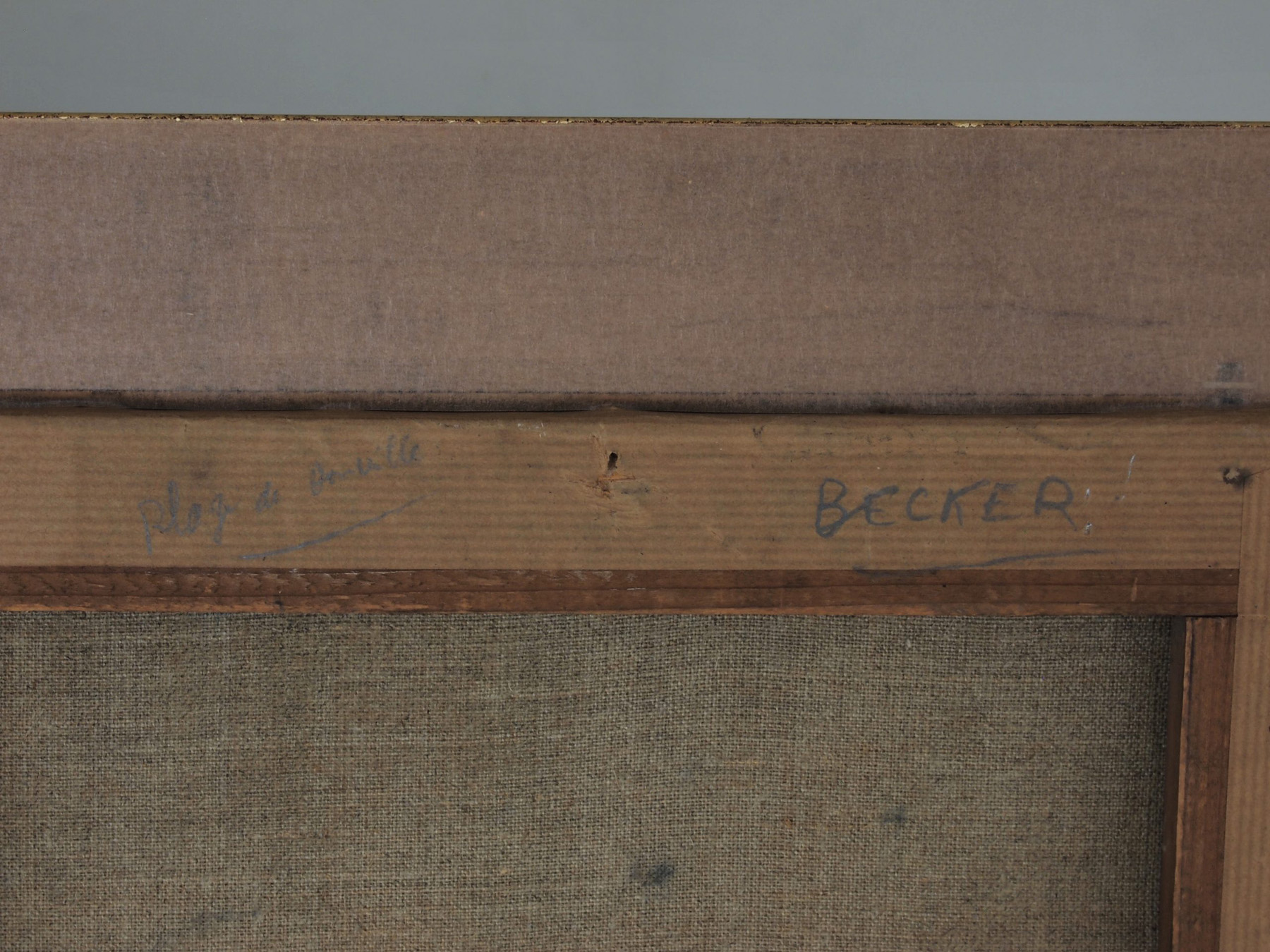Murrle Bennett Gold, Peridot and Mother-of-Pearl Bracelet*
Bracelet from Murrle Bennett crafted in 9 ct. gold, so very typical of the style of jewellery supplied by them to Liberty’s during the early 1900’s. Openwork in design with alternate rectangular and square sections,…
Archibald Knox Gold Pendant for Liberty
Gold pendant with an openwork entrelac design from the drawing board of Archibald Knox and dating from circa 1905. Set with a central blister pearl drop and with a turquoise matrix lower drop, this pendant…
‘Lady on The Seine’ by Dietz Edzard*
Ornately framed oil on canvas by the German born artist Dietz Edzard (1893-1963). This is an atmospheric half length portrait of an elegantly dressed young woman taking refreshment whilst seated on a verandah raised above…
Loetz ‘Candia’ Vase with Silver Overlay
Little cabinet vase from Loetz in opaque ‘Candia’ glass with a trefoil rim, further decorated with an applied Art Nouveau ‘Silberiris’ design in pure silver. Loetz collaborated with a company in the US known as…
WMF Flower Dish
Pewter flower dish from WMF with the original green cut glass removable liner. So Art Nouveau, with its flowing outline, featuring an openwork whiplash design framing leaves and berries of ivy. Originally electro-plated but most…
Contact Details
Tel: +44 (0)7802 872363
0345 6071772
Email: info@nouveaudecoarts.com
‘The Beach at Deauville’ by Victor Baky*
Item Description
Oil painting on canvas of part of the beach near Deauville, France depicting the scene on a particularly blustery day.
White peaked waves can be seen breaking heavily on to the sands as a few people are dotted at the edge of the shore, ahead of their wooden beach huts placed a little further back from the sea.
In the central foreground a canvas shelter protecting the camp fire has been erected, its material flapping in the offshore breeze. The billowy clouds in the sky above are particularly realistic and one can almost hear the breakers and feel the strength of the wind.
Strongly and confidently executed using a palette knife which gives the painting a distinctive feel, but there was initially some confusion over the artist.
The French auction house from whom we acquired it credited the artist as being Harry Becker but this is incorrect. After extensive research by a knowledgable and trusted contact in Australia, we can now confidently name the artist as the Hungarian Victor Baky (Gyözô Baky in Hungarian, 1902-1972). Baky moved to Paris in 1924 to study at the Grande Chaumière and was elected a member of the Féderation Française des Artistes in 1928.
This painting dates from the late 1920’s to very early 30’s and measures 56 X 65 cm including the frame, with the visible image at 44.5 X 53.5 cm.
